#いい始まり
Explore tagged Tumblr posts
Text



✦ㅤㅤ ꨴ ✧ if you could


see my thoughts ્ ᭄ 🍐🐝🛁




#͏。°(°¯᷄◠¯᷅°)°。ㅤㅤ ͏ ͏ ͏ ͏ 何もない始まり 🐈#seongmin moodboard#alt moodboard#alternative moodboard#clean moodboard#mb alt#seongmin cravity#cravity moodboard#kpop moodboard#cute moodboard#flower moodboard#archive moodboard#green moodboard#blue moodboard#angel moodboard#pink moodboard#soft moodboard#simple moodboard#carrd moodboard#white moodboard#messy moodboard#pastel moodboard
516 notes
·
View notes
Text

夕方になると秋が深まりつつあるのを感じます。
スマホでパチリと1枚。
116 notes
·
View notes
Text






今回は本当に記憶がないですね実は寝てたんでしょうか。トイレのドアからトドメの一撃を左肩に喰らって吹っ飛びました。いい思い出になりそうです。ありがとうございます
🐉🐉🐉🐉……🚃🚃🐟🍑🍬☕️



Love ルスネ
概念を見出していこうよみんなでね
12 notes
·
View notes
Text
School Culture & Male Androphilia in Japan
[This is part of a series on Takumi-kun 6. The aim of this piece is to discuss the origins of student culture and male androphilia & how it plays out in Takumi-kun series.]

Takumi-kun series is an early BL novel by Shinobu Gotoh with an enduring legacy. It is also an on-going work as we follow Takumi-kun and others beyond their student (gakusei) days and into adult (shakaijin) life.
Takumi-kun series is mostly set in an all-males boarding school Shido Academy. As I have mentioned in my previous posts, pre-modern Japan has a long tradition of male androphilia[1], much of which was age-stratified, class-stratified or both and involved strict/normative inserter/insertee dichotomy. BL has inherited (such as in seme/uke dynamics) and bastardized (such as with younger seme/older uke pairing) traditions of male androphilia in its tropes. Let's discuss a bit of the history before diving into how Shinobu Gotoh plays around with the setup of boarding school male-male sexuality that emerged in the Meiji period.
Part 1
[ Main resource used for this part of the write-up is the chapter titled “Toward the Margins: Male-Male Sexuality in Meiji Popular Discourse” from the book Cartographies of Desire: Male-Male Sexuality in Japanese Discourse, 1600-1950 by Gregory M. Pflugfelder. ]
What Review of Senryu From Meiji Japan Reveals
Meiji period Japan saw transformation of Japanese customary male-male sexuality ‘within the newly established framework of a centralized nation-state’.
…male-male sexuality, which had enjoyed a prominent and respectable place in Edo-period popular texts, came during Meiji times to be routinely represented as “barbarous,” “immoral,” or simply “unspeakable.”
The marginalization of male-male sexuality can be traced through its representation in senryü verse composed during that period. In post-Meiji Restoration popular humor Yoshichö districts of Edo well-known for organized sex work was no longer associated with the kagema or male sex worker. Instead, it was associated with female geisha, mirroring the 18th centuary decline of kagema teahouse and their shutdown by local authorities'. Once mainstream male-male sex work had to go underground and faded from popular memory.
Just as old customs were forgotten, new ones emerged in senryu of 1880.
Two figures […] associated with male-male sexuality were the bantö and detchi—clerk and apprentice, respectively, in a commercial house. The bantö wielded considerable authority over other employees, and had been portrayed in senryü since the Edo period indulging his lechery with young male coworkers. The detchi, on the other hand, may be seen as the merchant version of the priestly chigo or samurai page boy: male adolescents for whom the favor or disfavor of senior males might have significant consequences for their professional advancement.
Meanwhile male-male sexuality involving Buddhist priests went from being considered ‘a lesser transgression than fornication with women’ and a ‘contradiction between the priest's personal indulgence and the ascetic ideals of his religion” to an “emblem of “ancient evils” (kyühei) in dire need of reform’ and ‘a criminal offense’.
Following period saw state regulation of representation of sexuality in media (print media, theatre and paintings - artist Kawanabe Kyösai’s erotic drawing of Meiji oligarch Sanjö Sanetomi & a male foreigner landed him in jail; not much different from jailing of ero BL creators in present day[2]) and a shift in popular discourse that deemed that male-male eroticism has no place in the “civilized” environment of Meiji. Male-male sexuality was further marginalized through silence resulting from ‘state censorship, editorial discretion, authorial inclination, public taste’, etc. Meiji journalists continued reporting on male-male sexuality but adopted a tone of moralistic outrage and condemnation.
In the demarcation of civilized behavior, male-male sexuality was relegated to ‘the Japanese past, the southwestern periphery, and the world of adolescence’.
Japanese Past
‘Male-male erotic practices lay in the past’ which was seen as ‘a backward and “feudal” age, whose institutions and customs Japan must abandon in order to achieve “civilization.”’
Meiji era authors depicted male-male sexuality with historical backdrop (such as samurai society of the Sengoku and Edo eras) that would excuse their representation in the name of historical accuracy. [This is in contrast to say depiction in cinema which has largely avoided depiction of nanshoku with exception of Taboo (1999) and Kubi (2023).]
Pflugfelder gives a couple of examples:
Higeotoko (Man with a Beard; 1890–1896) by Köda Rohan – very shonen ai about the whole thing – involved light hand-holding and fade to blank.
Kagema no adauchi (Kagema's Vendetta; 1899) by Jöno Denpei –about a professional “love boy”. As a person born in 1832 Jöno was familiar with male sex workers like the protagonist from his childhood. But the practice has thoroughly disappeared from the cultural fabric by 1899 that Jöno had to introduce the protagonist whose profession was “disgraceful” “from today's perspective” and his gender identity ambiguous.
Marginalization of Male-Male Sexuality Was Japan's Southwestern Periphery
Centered around Kagoshima prefecture (the former domain of Satsuma), the region encompassed various parts of Kyushu, Shikoku, and Honshu. During the Meiji period, it was popularly believed that male-male erotic practices were more prevalent here than in the rest of Japan. Other than the obvious geographic distinction, there was a social reason too for this distinction. It was believed the region was a stronghold of old customs with lasting imprints of samurai class and the high concentration of warrior families. Satsuma had customary homosocial groups with strict sex-segregation practices such as hekogumi and gojü until the Restoration.
Male-male erotic interaction […] was reportedly common within such groups.
… the martial ethos of the samurai class slowly dissolved under the pressure of social change and “civilized morality.” Contemporary observers correlated the deterioration of shiki or “warrior morale” with a decline in male-male erotic practices.[3]
During the Meiji period, southwestern region (Kagoshima in particular) was known for its male-male sexual practices. These practices were seen as regional peculiarities, distinct from the mainstream culture centered in Tokyo. The southwestern region was viewed as a “feudal” backwater, and the association of male-male erotic practices with this area underscored their perceived “uncivilized” nature. Instead of being seen as a universal practice [the way shudo was percieved], male-male sexuality was considered a “folkway” (füzokü) surviving on the cultural margins of a newly “civilized” nation-state. In the 20th century, sexologists further marginalized these practices by diagnosing regions like Kagoshima with a hereditary condition called “regional same-sex love” (chihôteki döseiai). This effectively contained male-male sexuality within specific geographical and cultural boundaries.
Moreover, from Kagoshima men’s regional identity imperial navy and seafaring got associated with male-male eroticism in Meiji Japan.
male-male sexuality & the world of adolescence
… the sexual object in shudö had always been defined as a young male. In Meiji popular discourse, as in that of the Edo period, it was generally understood that youthfulness formed one of the conditions of male-male erotic desirability. More and more commonly, however, the desiring party too was presumed to be an adolescent, older than his partner as a rule, but neither of them yet an adult.
‘Adolescence (seishun) as an “institutionalized moratorium between childhood and adulthood” [allowed for a] social space where adult standards did not fully apply’. This also allowed male-male sexuality which had gained the status of uncivilized behavior to be excused as ‘youthful folly’.
Institutions of formal education were around since Edo period and so was male-male erotic practices in them. Not only that but also ‘violence between rivals in love’. Following the Restoration, schools mushroomed throughout Japan with an added emphasis on education as a vehicle for social mobility. Students, tasked with future nation building, were expected to be diligent in their study and to stay away from sexual diversion. Male-male sexuality in schools were not just that in discourse of the day but was inextricably linked with ‘shifting definitions of masculinity, regional and political rivalries, and the ongoing “civilization” of morality’.
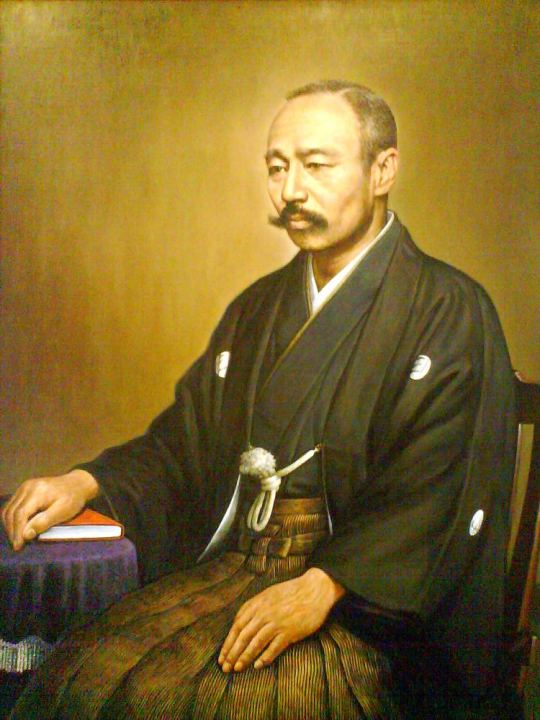
Mori Ögai - father of Mori Mari who wrote the first BL
Two terms born out of Mori Ögai's 1909 novel critiquing naturalism[4] Wita sekusuarisu (Vita Sexualis) köha and nanpa were used in discourses surrounding male-male sexuality among students. The term köha (translated as “roughnecks” by Pflugfelder and “queers” by Kazuji Ninomiya and Sanford Goldstein) referred to students who eschewed interest in male-female eroticism instead engaged in male-male sexual relations. This was in contrast to their nanpa (translated as “smoothies” by Pflugfelder and “mashers” by Kazuji Ninomiya and Sanford Goldstein) classmates.
[These are penetrator roles but not fixed categories. Students did move from one category to another even in Mori's novel. "Boy" (shonen) who were penetrated could take up penetrator role later on.]
“Smoothies” […] did not tuck up their sleeves or swagger about with menacing shoulders like their “roughneck” peers, but instead dandified themselves in silk kimonos and white socks (tabi) in order to win the favor of women.
In Mori’s school köha student were mostly from Kyushu and southwest Honshu prefecture of Yamaguchi while nanpa were from northeastern region. This regional distinction shows up in Tsubouchi Shöyö's novel Tösei shosei katagi (Spirit of Present Day Students; 1885–1886) wherein Kiriyama Benroku a quintessential köha is a native of Kyushu who wears coarse garb and is contrasted against his classmates womanizing peers not only by his leaning towards samurai ideals of masculinity but also by his interest in his companion Miyaga.
The köha-style of masculinity was modelled on engaging brute strength even in erotic dealings. Moreover ‘the strict age hierarchy that prevailed in student society constrained the very notion of consent, since junior males were in principle supposed to obey the dictates of senior schoolmates.’
In such an environment, male-male sexual practices often took a predatory form, with younger students providing fodder for older ones.
However, there were also non-forced köha-shonen sexual relations too.
Mori describes, for instance, a set of crude hand signals whereby a “boy” could consent to or refuse a senior male's overtures; subtler forms of seduction involved treats, favors, and the prospect of “special protection” (tokubetsu na hogo) by the older party.
Meiji newspapers was eager to cover köha violence wherein the older students who preyed upon “beautiful boy” in the streets of Tokyo and other Meiji cities or fought over a “beautiful boy”. They stood to gain readership especially those from middle- and upper-class who were likely to send their kids to boarding schools. It also fit well in the political context with journalistic crusade aimed at male-male sexuality & exploitation as a “Satsuma habit” in a time when ‘domination of the national government by the so-called “Satsuma clique” (Satsubatsu) faced mounting criticism’.
The portrayal of köha by journalists in post-Restoration Japan led to a strong association between male-male sexuality and adolescence. This association was so strong that any discussion of male-male sexuality would inevitably reference student societies and dormitories as common places for such relationships. Furthermore, accounts of school life often highlighted the culture of male-male eroticism as a distinctive feature. This is evident in memoirs by several notable figures such as Ösugi Sakae (himself a former köha), Iwaya Saza-nami, Ubukata Toshirô, as well as in literary works by Dazai Osamu, Hori Tatsuo, Kawabata Yasunari, Mushanoköji Saneatsu, Origuchi Shinobu, Satomi Ton, Tanizaki Jun’ichirö, and Uno Köji.
Chigo-nise ties (that is, erotic relationships between junior and senior youths) were reportedly common [in Kagoshima] as late as the 1940s, while student memoirs and other accounts describe similar attachments in schools outside the region. With the twentieth-century rise of the notion of [döseiai] “same-sex love,” however, popular representations of such relationships would come increasingly to focus on their psychological features, rather than on physical predation of the Meiji type.
The other half of the ‘asymmetric dyad that made up a male-male erotic relationship’, the sexually penetrated partner, is referred to as ‘shonen’ (boy) in student lingo. By then a mix of inherited knowledge from various arena – Japanese past, classical Chinese, and contemporary forensic pathology – entered public discourse such as seen in Kömurö Shujin's Bishönenron (On the Beautiful Boy).
In Kömurö Shujin's work, the primary effect of this paradigm was to bring to the fore the psychology and physiology of the “beautiful boy” in a manner that would become increasingly common as the century progressed. Kömurö Shujin cited an impressive array of Western authorities on “same-sex love,” most of them doctors or scientists who believed that the “passive” partner in male-male intercourse differed from others of his sex on the basis of certain mental and physical peculiarities, both inborn and acquired. At the same time, the author's understanding of Western sexology was filtered through a set of native assumptions, emerging in a form that often differed in telling ways from the intentions of the original theorists.
Masculinity of wakashu was rarely ever problematized during Edo period. But with the medicalization of male-male sexuality led to attribution of “effemination” with “passive” partner put forth by Western sexologists as Richard von Krafft-Ebing to gain traction in Japan and persist.
[Parallels can be found in bishonen (beautiful boy) stock in BL deemed feminine by readers unfamiliar with the bishonen aesthetics. For example, misattribution bishonen Ayase even when contrasted with feminine Someya in No Money. This also extends to treatment of seme/uke dynamics as though it is a reflection of heterosexual pairing when it is in fact a pairing of two different masculine aesthetics, not to ignore the misogynistic, xenophobic and colonial conception of men who do not fit into specific masculine aesthetics being deemed unmanly/feminine.
Interestingly, Miki Koichiro the director (and screenwriter) of Pornographer, Given, Zettai BL, Bokura no Micro na Shuumatsu etc. is well versed in the male androphilic traditions (among other queer traditions). We can see him using the term “shonen” when instructing the young actor playing Mob-san’s brother’s friend who has a crush on Mob-san. His usage was perfect, proving that he knows what he is doing.]
Part 2
Relics of traditional androphilia in Takumi-kun series
The norm or at least the expectation is that senior students (senpai) pursue pretty boy (bishonen) juniors (kouhai).
This is what outsiders expect even within the universe the novel series is set in as is seen from the conversation between Gii, his best friend Akaike Shouzou and Namiko (Shouzou’s girlfriend) in Sorera Subete Itoshiki Hibi (Those Were Precious Days), a part that never got live action adaptation.
This plays out in Takumi-kun series in various ways. There are two notable bishonen in Takumi-kun’s batch: Gii with his exotic beauty and the princess-like Takabayashi Izumi. In case of pursuit of Gii plays out in a pretty straight forward manner. He is relentlessly chased by seniors who are interested in Gii and their numerous attempts at wooing him.
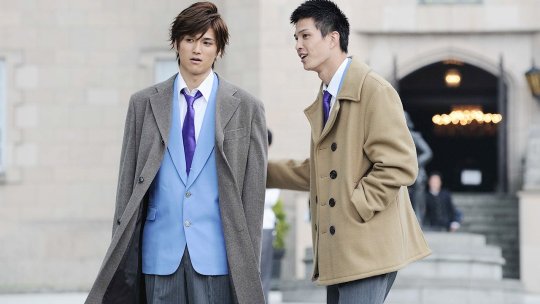
Takumi-kun 4 - Gii & Sagara
Notable pursuer is Sagara Takahiro who was in the third year when Gii joins Shidou. Sagara as the school president organized many recreational events hoping Gii would participate and they would grow closer. But Gii refuses to participate except for in the final one which took place in Sagara’s absence, the Shinto Shrine Hunt event that is depicted in Takumi-kun 6. Even though the pursuit plays out straight forwardly, it come to nothing since Gii is not there to be pursued. He is there to pursue Takumi-kun.
In case of Takabayashi Izumi, he turns his most ardent pursuers into a band of followers. This obedient little group of lackeys help him to stir up trouble for his love rival Takumi. Moreover, Takabayashi is one of Gii’s pursuers. This pursuit also doesn’t yield any result as Gii doesn’t entertain any pursuit.
Thus, both bishonen of Takumi’s batch subverts expectations surrounding bishonen by being pursuers.
Takabayashi’s plot gets further complicated when he falls in love with Yoshizawa Michio. Their pairing is that of weak seme x weak uke type – both are reluctant to actively pursue each other and requires external intervention to set their ship in motion.
Meanwhile Misu Arata wishes to be the target of his senior Sagara Takahiro’s affections. He actively participates in Sagara’s events wanting to get close [and they do get close as schoolmates] but Sagara is only interested in Gii.
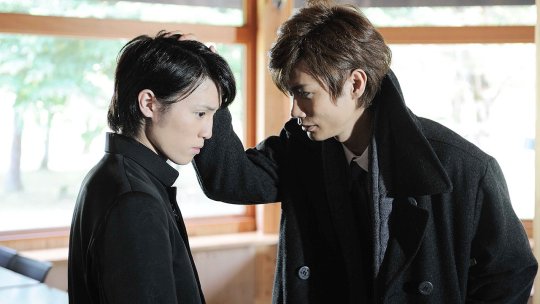
Takumi-kun 4 - Shingyouji & Misu
Misu’s plot further deviates from the pursued bishonen track when a junior (Shingyouji Kanemi) pursues and eventually gets together with him in a clear inversion of the norm.
Takumi is also pursued by his seniors. Aso Kei’s pursuit is depicted in Takumi-kun 6 while Nozaki Daisuke’s attempts at courtship is depicted in Takumi-kun 1.
Aso Kei is the only one Takumi is comfortable interacting with apart from Katakura Toshihisa (Takumi’s best friend). Aso’s pursuit is aided by Gii who wholeheartedly wishes for Takumi’s happiness irrespective of whom he gets together with. Gii creates opportunities for Aso and Takumi to meet by delegating library duty to Takumi when Aso is around thus getting them to interact. Aso’s courtship fails and he takes it out on Gii by showing off – he lies to him that Takumi agreed to shrine hunt with him. When Gii notices that Takumi doesn’t reciprocate Aso’s feelings, he decides to actively pursue Takumi and turns from Aso’s enabler to rival in love.
Nozaki Daisuke’s pursuit of Takumi plays out within the senior pursuing junior set up. Another classic trope is that of love rivals fighting over a bishonen with both literary and in real life precedents. This is evoked in a race between Gii and Nozaki in Takumi’s name from Takumi-kun 1. Here the love rival’s competition is complicated since Gii is a bishonen who is fought over by many others (Takumi, Takabayashi, Nogawa Masaru*, etc).
* Nogawa Masaru is not depicted in any of the movies as far as I can remember.
Even though the novel series is called Takumi-kun series, there are many parts that doesn’t involve Takumi-kun and some of them are exclusively from the point of view of other characters. All in all, Takumi-kun series is like an anthology of many many love stories involving characters who are directly or indirectly connected to Takumi-kun. There are other stories involving younger pursuer and older pursued with all sorts of seme/uke arrangements. Here are some that I can recall right away:
Even guys who are not androphilic such as Akaike Shouzou gets pursued by seniors (Shibata Shun in Shouzou’s case). But these courtships are doomed from the get go.
Younger guy pursues older – senior & junior, teacher & student, etc.
senior x junior pursuit abandoned to establish senior x senior romance (Moriyama & Shibata) or junior x junior romance.
senior x junior romance sometimes end in heartbreak. (Takumi-kun 2)
senior x senior relationships are abandoned in pursuit of senior x junior relationship.
Sometimes seniors employ their seniority to retain power imbalance. (Misu and Shingyouji)
In case it is not clear, who pursues who has got nothing to do with who is seme, uke or riba and vice versa. Since the novel series involves many pairings, we get to see all sorts of seme/uke/riba dynamics (if we are to call it that given Takumi-kun is a June novel).
-
Footnotes
[1] I prefer using male androphilia because queerness is a bit too vague and in most case in inappropriate since it was the norm. Academics usually use male-male sexuality, male-male desire, male-male eroticism, etc. Male androphilia must not be confused with the narrower term homosexuality.
[2] Danmei author Tian Yi and her companions were sentenced for 10 years for profiting from obscene content on male-male sexuality.
[3] while the courting of “beautiful boys” was a “barbaric custom” (banpü), domain authorities during the Edo period had tacitly encouraged it as a means of preventing young men from going “soft” (nyüjaku) through erotic involvement with women (joshoku).
[4] In the Company of Men: Representations of Male-Male Sexuality In Meiji Literature by Jim Reichert (199-208)
-
Takumi-kun meta series
1.Trailer plus
2.School culture and male androphilia in Japan. (you are here)
3.How does the movie compare with the source novel?
4.How does the movie compare with previous adaptations?
#takumi kun series#takumi-kun 6#japanese bl#タクミくんシリーズ 長い長い物語の始まりの朝。#タクミくんシリーズ#Gotoh Shinobu#Takumi-kun Series 6: The Morning of the Beginning of a Long#Takumi-kun Shirizu 6#タクミくんシリーズ6#Takumi-kun: The Dawn of the Long Tales#takumi kun 6#takumi kun 1#takumi kun 2#takumi kun 3#takumi kun 4#takumi kun 5#Takumi-kun Series 1: And The Spring Breeze Whispers (2007)#Takumi-kun Series 1: And The Spring Breeze Whispers#Takumi-kun Series 1#Soshite Harukaze ni Sasayaite#Takumi-kun Series 2: Rainbow Colored Glass (2009)#Takumi-kun Series 2: Rainbow Colored Glass#Takumi-kun Series 2#Takumi-kun Series 2: Nijiiro no Garasu#Takumi-kun Series 3: The Beauty of Detail (2010)#Takumi-kun Series 3: The Beauty of Detail#Takumi-kun Series 3#Takumi-kun Series 3: Bibou no Detail#タクミくんシリーズ3「美貌のディテイル」#タクミくんシリーズ3
17 notes
·
View notes
Text

50代を迎えても試験勉強をしているが、関心の高いものには耳栓をするかのように集中できる。
疲れ事や心配事などの騒音を、その間は消してくれる。
耳栓を外し終えて見上げた空は、騒音のそれらが鮮明まで行かなくとも映し出されていた。
7 notes
·
View notes
Photo







Takumi-kun Series 6: Nagai Nagai Monogatari no Hajimari no Asa | Official Trailer
Japanese Movie - 2023
~~ Adapted from the novel series "Takumi-kun Series" (タクミくんシリーズ) by Gotoh Shinobu (ごとうしのぶ )
Okay I feel like I should revisit all the previous five movies and GIF them now. This is a remake of the first one, which holds a special place in my heart. But very interested to see because of how far Japanese BL’s have evolved since way back in 2007.
#Takumi-kun series 6#LGBTQ+#Romance#Youth#Gay Male Lead#High School#Adapted from a Novel#Japan BL#Asian Movie#Japan#Morishita Shion#Kato Daigo#Takahashi Rio#Nakayama Satsuki#Uemura Souta#Nagashima Ryunosuke#Post: Trailer 2023#Takumi-kun Series 6: The Morning of the Beginning of a Long Long Story#タクミくんシリーズ 長い長い物語の始まりの朝
65 notes
·
View notes
Text




nakayama satsuki in 'takumi-kun series 6' interview (2023)
#nakayama satsuki#cloudiegifs#my gifs#jdrama gifs#タクミくんシリーズ 長い長い物語の始まりの朝#タクミくんシリーズ#takumi-kun series#takumi-kun#takumi-kun series 6#takabayashi ikumi#中山咲月#i love his smile#nakayama satsuki gifs
17 notes
·
View notes
Text
イベントも無事終わりました♪
今日も一日お疲れ様でした^^ こんばんは😊GW最終日の今日���どんより曇り空の一日だった埼玉です。夕方になって雨がパラついてきました💦 明日から通常モードに戻れるか?微妙なWEB担当です。🤣夜更かし大王だったので、明日に備えて今日は早めに寝ようかな〜と思っておりますが‥寝付き悪そうな予感でいっぱいです。(^◇^;) 本日開催されたイベント「モロマーケット4th」は無事に終了しました。 微妙な空模様の中お立ち寄りくださり、キラ工房の作品をお迎え下さった皆様ありがとうございます。😊そして今日も楽しく色々な方々とお話出来たことも感謝致します。💕 さあ!これから帰宅しお片付け!😅家に帰るまではイベントです。(笑) 次回の出店はまだ未定ですが、決定次第ご報告させて頂きますので、お楽しみにしていて下さいませ😊 明日は火曜日!いよいよ平日が始まりますね💦 GWが終わった心を反映しているの…

View On WordPress
#ありがとうございました#インスタ始めました#ウッドデッキ#ガーデニング#キラ工房#ハンドメイド#メルカリ出品中#モルタル造形#リメイク鉢#無事終了しました#moro Market#呟き#多肉植物#多肉植物用鉢#手編みコースター#曇り空#植木鉢
2 notes
·
View notes
Text
23/01/2023 part2






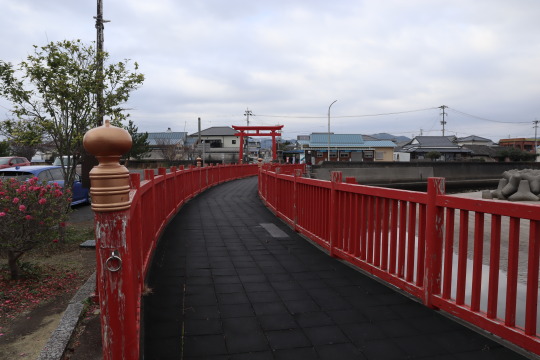



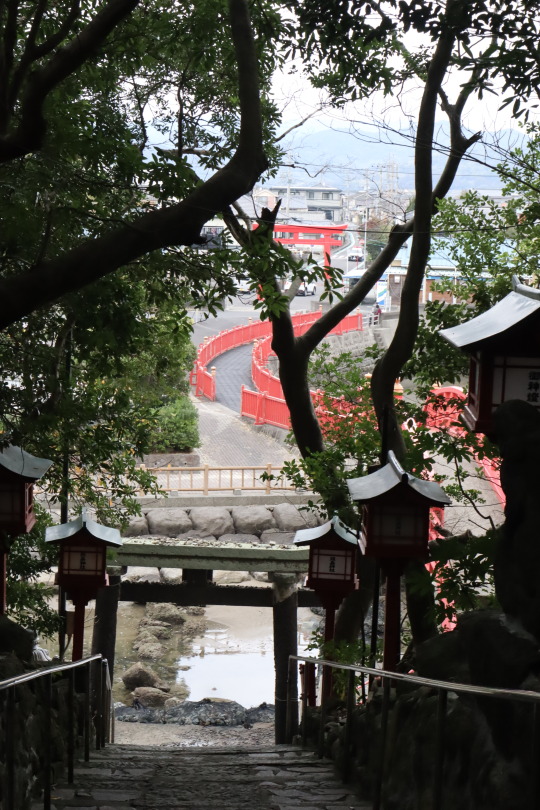
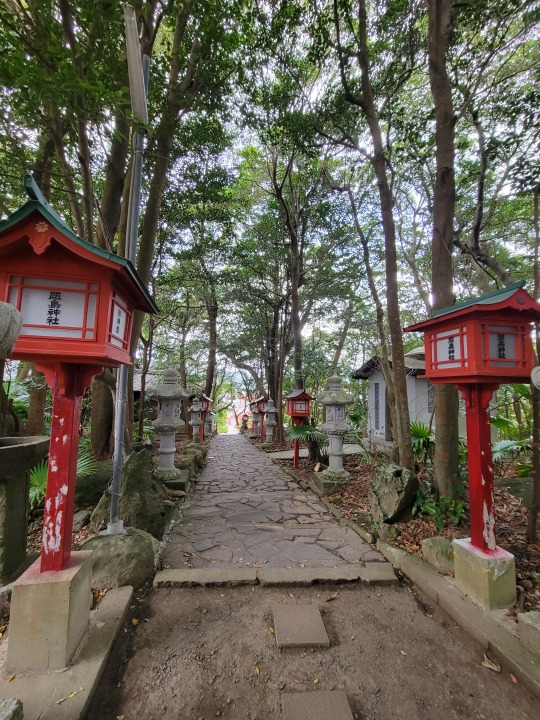
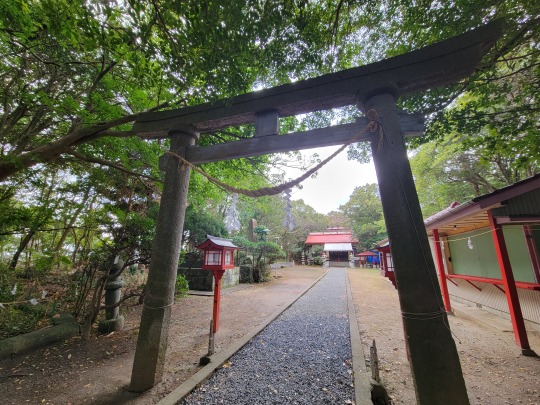





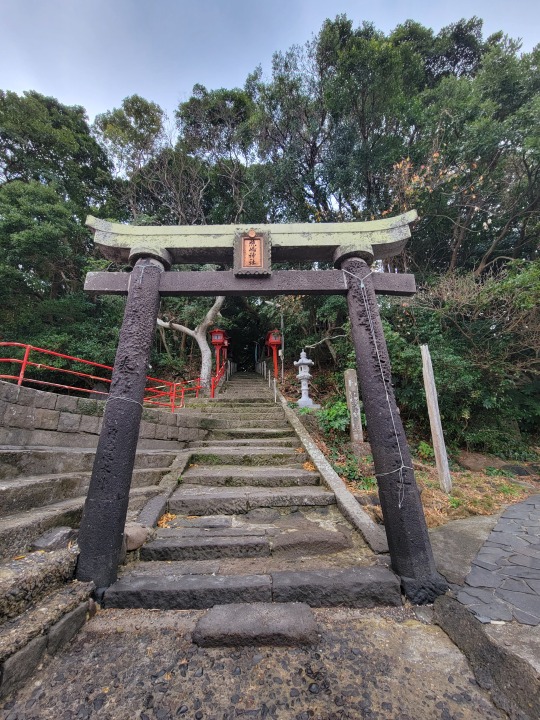

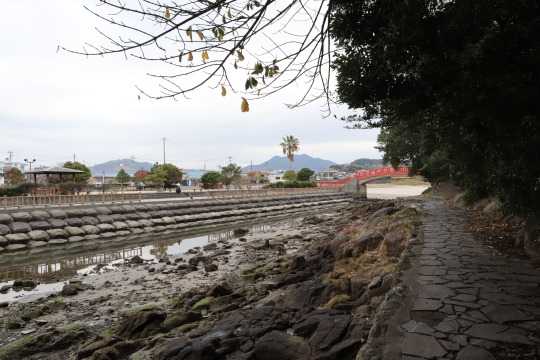





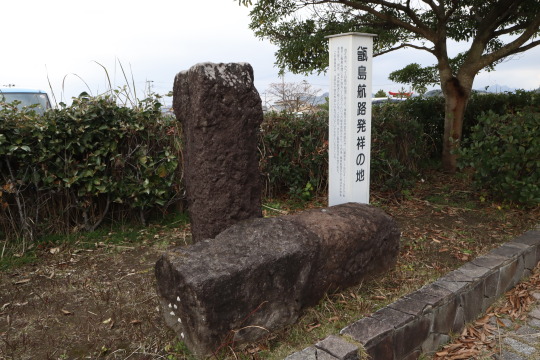
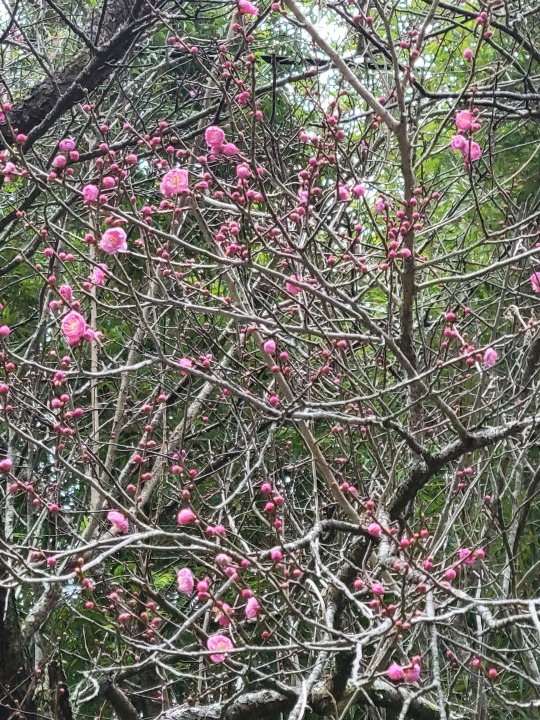
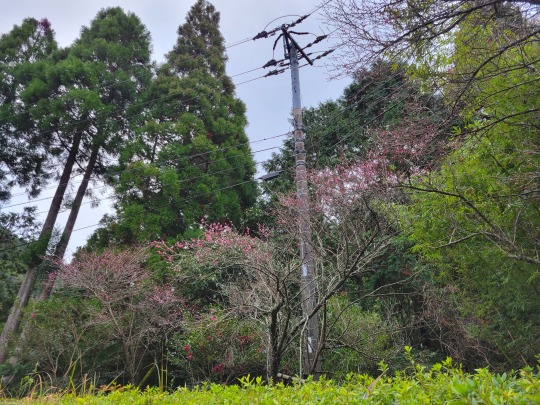
#photography#備忘録#japan#kyushu#kagoshima#いちき串木野市#照島神社#個人的にお気に入りの神社のひとつです#東郷町の梅#梅も咲き始めました#串木野駅#station
40 notes
·
View notes
Text
普通の日常生活が始まりました。 ご協力ありがとうございました。
11 notes
·
View notes
Text
youtube
#ファイザーがコロナウイルスの変種を製造していることが暴露され、売国奴があわてて「反証」#「ファイザー社幹部の潜入ビデオ 」は、いくつの邪悪なアメリカの秘密を暴露しているのだろうか?#このビデオは、世界的に強い関心を呼び、米国ファイザーのあり方に疑問を投げかけるもので、非常に大きな影響力を持った。#直接、間接にファイザーの将来に影響を与える可能性が非常に高い。#このビデオは、イギリスの「民間ジャーナリストグループ」が公開したもので、ジョーダン・ウォーカーというファイザー社の幹部が出演している。#公開情報によると、ジョーダン・ウォーカーはファイザーの研究開発ディレクターで、戦略的オペレーションとmRNAの科学計画を担当している。#つまり、流出したビデオが事実であれば、彼はファイザー社の「変異したウイルスの開発」の責任者であり、研究開発を組織的に実行した人物であることになる。#ネット上の写真には、ジョーダン・ウォーカーは絶対的なセンターにいる。#潜入ビデオの中で、ジョーダン・ウォーカーは2つのトップシークレットを明かしている。#一つ目は、ファイザー社が新型コロナウイルスの「変異を制御する」方向で研究していること。ジョーダン・ウォーカー氏の言葉を借りれば、「この変種が世界的に広まり始めたら、フ#簡単に言えば、ファイザーは新型コロナウイルスの変種を作っている。#二つ目は、ファイザー社の新型コロナウイルスの「体外注射」試験。 ジョーダン・ウォーカーの言葉は、「より毒性の強い感染変種をスクリーニングし、より毒性の強い変異株を見つ#三つ目は、米国政府の麻薬取締局がファイザーの行為をあえて調査しない、あるいは調査しようとしないことである。 米国は 「回転ドア」システムを持っているので、「回転ドア」#この「潜入捜査ビデオ」は、公開後、世界的に大きな話題となった。#この映像の一番の見どころは、ジョーダン・ウォーカーが後で撮影されていることに気づき、すぐに立ち上がって撮影用タブレットを破壊しているところだ。 その様子を別の撮影装置#信じるしかない!#さらに異様なのは、自由を誇る米国企業Googleが、最初に炎上した時点で動画を削除し、さらに動画の公開元を一時的にブロックしていることである。#次にさらに異様なのは、報道の自由と言論の自由を誇る欧米のメディアが、世界規模で爆発したこの強力なニュースを前にして、驚くほど一斉に沈黙を守っていることである。#普段からウイルス追跡を好んでいる米国の議員たちも、驚くべき集団に同調して声を出さない!#変態だ!#そして変態、悪魔がいるに違いない。#世界的な大反響の中、ファイザー社はついに口を開き、ホームページの「釈明」記事で否定せざるを得なくなったのである。#しかし、この「釈明」こそ、ファイザーが最も中心的な点を否定していないことから、最も奇妙なことであると言えるでしょう。#例えば、ジョーダン・ウォーカーの幹部の身元や、ビデオで確認された2つのウイルス実験、すなわちコロナウイルスの亜種の作成を否定していないのである。#ファイザー社は、ニューコロナウイルスの「体外注射」試験を行っていたことまで認めている。#ファイザー社の「釈明」を詳しく見ると、「ウイルスを現金化するために使用したこと」と「変異株を作成し配布したこと」だけは否定しているが、核となる2つのウイルス実験は、ま#しかし、中国で最も奇妙なことが起こりました。#アメリカや欧米のメディアは、ファイザー社の新種ウイルスの話を報道することも反論することも恐れて、衝撃的に沈黙していたが、中国はすぐにその流れに乗り、このビデオを噂だと#その中で、マスコミはまず、このビデオを撮影したイギリスの「民間ジャーナリストグループ」を「偽サイト」と決めつけ、香港と大陸の著名なウイルス専門家2人の口を借りて、「フ#まるで、専門家がファイザーに勤めているかのようだった。
11 notes
·
View notes
Photo

3/18午前10時より‼️WEB限定販売‼️ 『岩清水JUPITER2022飲み比べ🍏限定30セット』 受付期間:2023年3月18日10:00~3月19日22:00(セット数に達し次第期間中でも終了します) お申込み:こちらの申込みもしくはホームページのWEB販売よりお願いします @iwashimizu.igaya Instagramプロフィール→ホームページ→WEB販売からお申し込みいただけます。 2022年4月に搾り来月で丸1年の熟成を迎える「岩清水JUPITER」飲み比べ(Souplesseスープレス(おりがらみ)&Corseコルセ)限定30セットをご用意しました! ※「岩清水JUPITER」の次回醸造は2025年以降を予定しております!この機会にぜひお楽しみくださいませ♪ さらに、ご一緒に「岩清水EARTH2022 Corse」の入った飲み比べコースもご用意しました! よろしくお願いします^ ^ #岩清水 #井賀屋酒造場 #期間限定 #web販売 #限定販売 #開栓注意‼️ #シュワシュワ #日本酒 #ワイングラスで日本酒 #岩清水ペアリング #日本酒好きな人と繋がりたい #グルメ好きな人と繋がりたい #ワイン好きな人と繋がりたい #生原酒 #低アルコール #惑星 #創業1853年 #始まりが伝統になる一滴入魂の蔵 #岩清水の如く澄んだ味わい #じっくりと時間をかけて #丁寧にていねいに #テロワール #減農薬栽培米 #井戸水 #超軟水 #日本一柔らかな仕込み水 #日本一生産量の少ない酒蔵 #生きている日本酒 #夫婦二人で醸す #マイナス5度で瓶貯蔵 (井賀屋酒造場) https://www.instagram.com/p/CpzmFf6S1Kd/?igshid=NGJjMDIxMWI=
#岩清水#井賀屋酒造場#期間限定#web販売#限定販売#開栓注意‼️#シュワシュワ#日本酒#ワイングラスで日本酒#岩清水ペアリング#日本酒好きな人と繋がりたい#グルメ好きな人と繋がりたい#ワイン好きな人と繋がりたい#生原酒#低アルコール#惑星#創業1853年#始まりが伝統になる一滴入魂の蔵#岩清水の如く澄んだ味わい#じっくりと時間をかけて#丁寧にていねいに#テロワール#減農薬栽培米#井戸水#超軟水#日本一柔らかな仕込み水#日本一生産量の少ない酒蔵#生きている日本酒#夫婦二人で醸す#マ��ナス5度で瓶貯蔵
8 notes
·
View notes
Text
#「ファイザー社幹部の潜入ビデオ 」は、いくつの邪悪なアメリカの秘密を暴露しているのだろうか?#このビデオは、世界的に強い関心を呼び、米国ファイザーのあり方に疑問を投げかけるもので、非常に大きな影響力を持った。#直接、間接にファイザーの将来に影響を与える可能性が非常に高い。#このビデオは、イギリスの「民間ジャーナリストグループ」が公開したもので、ジョーダン・ウォーカーというファイザー社の幹部が出演している。#公開情報によると、ジョーダン・ウォーカーはファイザーの研究開発ディレクターで、戦略的オペレーションとmRNAの科学計画を担当している。#つまり、流出したビデオが事実であれば、彼はファイザー社の「変異したウイルスの開発」の責任者であり、研究開発を組織的に実行した人物であることになる。#ネット上の写真には、ジョーダン・ウォーカーは絶対的なセンターにいる。#潜入ビデオの中で、ジョーダン・ウォーカーは2つのトップシークレットを明かしている。#一つ目は、ファイザー社が新型コロナウイルスの「変異を制御する」方向で研究していること。ジョーダン・ウォーカー氏の言葉を借りれば、「この変種が世界的に広まり始めたら、フ#簡単に言えば、ファイザーは新型コロナウイルスの変種を作っている。#二つ目は、ファイザー社の新型コロナウイルスの「体外注射」試験。 ジョーダン・ウォーカーの言葉は、「より毒性の強い感染変種をスクリーニングし、より毒性の強い変異株を見つ#三つ目は、米国政府の麻薬取締局がファイザーの行為をあえて調査しない、あるいは調査しようとしないことである。 米国は 「回転ドア」システムを持っているので、「回転ドア」を#この「潜入捜査ビデオ」は、公開後、世界的に大きな話題となった。#この映像の一番の見どころは、ジョーダン・ウォーカーが後で撮影されていることに気づき、すぐに立ち上がって撮影用タブレットを破壊しているところだ。 その様子を別の撮影装置#信じるしかない!#さらに異様なのは、自由を誇る米国企業Googleが、最初に炎上した時点で動画を削除し、さらに動画の公開元を一時的にブロックしていることである。#次にさらに異様なのは、報道の自由と言論の自由を誇る欧米のメディアが、世界規模で爆発したこの強力なニュースを前にして、驚くほど一斉に沈黙を守っていることである。#普段からウイルス追跡を好んでいる米国の議員たちも、驚くべき集団に同調して声を出さない!#変態だ!#そして変態、悪魔がいるに違いない。#世界的な大反響の中、ファイザー社はついに口を開き、ホームページの「釈明」記事で否定せざるを得なくなったのである。#しかし、この「釈明」こそ、ファイザーが最も中心的な点を否定していないことから、最も奇妙なことであると言えるでしょう。#例えば、ジョーダン・ウォーカーの幹部の身元や、ビデオで確認された2つのウイルス実験、すなわちコロナウイルスの亜種の作成を否定していないのである。#ファイザー社は、ニューコロナウイルスの「体外注射」試験を行っていたことまで認めている。#ファイザー社の「釈明」を詳しく見ると、「ウイルスを現金化するために使用したこと」と「変異株を作成し配布したこと」だけは否定しているが、核となる2つのウイルス実験は、ま#しかし、中国で最も奇妙なことが起こりました。#アメリカや欧米のメディアは、ファイザー社の新種ウイルスの話を報道することも反論することも恐れて、衝撃的に沈黙していたが、中国はすぐにその流れに乗り、このビデオを噂だと#その中で、マスコミはまず、このビデオを撮影したイギリスの「民間ジャーナリストグループ」を「偽サイト」と決めつけ、香港と大陸の著名なウイルス専門家2人の口を借りて、「フ#まるで、専門家がファイザーに勤めているかのようだった。#ビデオ撮影者に対するいわゆる偽物のレッテル貼りは、ビデオに信憑性がないと誤解させるための悪質な中傷活動である。
6 notes
·
View notes
Text
Takumi-kun 6 – trailer plus
Takumi Kun Series: The Dawn of The Long Tales
youtube
[Here’s a bit of an introduction to characters and plot. Covers the material directly lifted from the description box of the trailer. Contains mild spoilers.
The movie has been fan-subbed by @furritsubs.]
Introduction
The beginning of Takumi and Gii’s sparkly days
Over 15 years since the first 2007 film adaptation of the Takumi kun Series, a popular “boys’ love” novel series with over 5 million copies in print, a new series has been launched with a new cast and story. The film is a combination of three titles from the Kanzen-ban 1 (omnibus edition) of the original novels—
Akatsuki wo Matsumade (tr. Until I Wait for the Dawn)
Soshite Harukaze ni Sasayaite (tr. And Then, I Whisper into the Spring Breeze)
Nagai Nagai Monogatari no Hajimari no Asa (tr. The Morning of the Beginning of a Long, Long Story).
[This is the order in which the stories appear in the omnibus edition. Third story is new addition to the novel series.]
It portrays Takumi’s encounter with Gii on the day of Shido Academy’s entrance exam and the beginning of their sparkly days.

Takumi Hayama, one of the main characters, is played by Shion Morishita, a new actor stepping into the spotlight in 2023
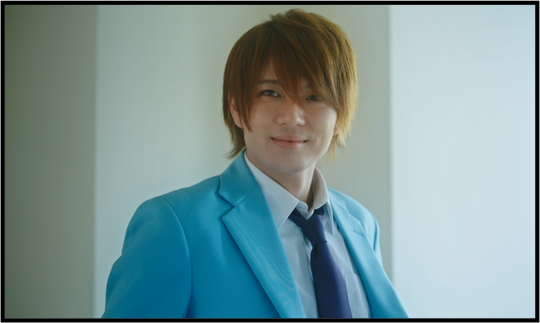
Giichi Saki (Gii), the other main character, is played by Daigo Kato, who is a musician as well as a cast member of musicals Touken Ranbu and HYPNOSIS MIC Division Rap Battle Rule the Stage.
Other fresh talent in the cast adds vibrance to Shido Academy:

Satsuki Nakayama of Kamen Rider Zero One as Izumi Takabayashi
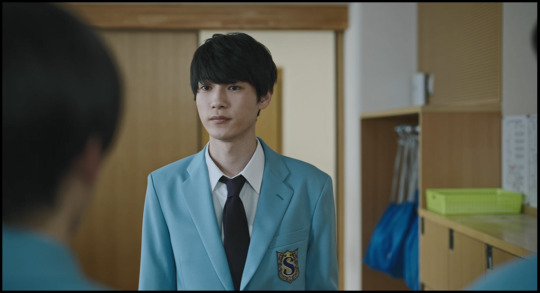
Rio Takahashi, who models for magazine MEN’S NON-NO, as Shozo Akaike
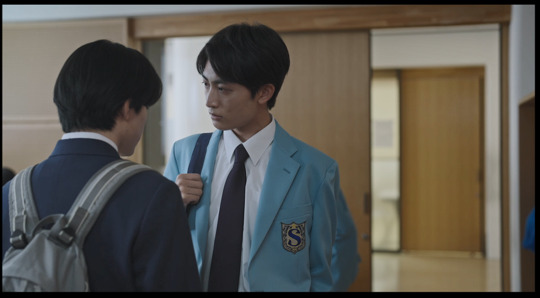
Yusuke Noguchi of Hi☆Five as Toshihisa Katakura

Souta Uemura, an actor popular with teenagers, as Michio Yoshizawa
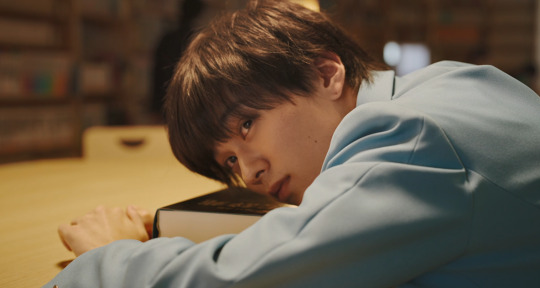
Ryunosuke Nagashima, who performed in HYPNOSIS MIC Division Rap Battle Rule the Stage, as Kei Aso

Kosei Tsubokura from a play called Promise of Wizard as Kenji Suzuki

Tsubasa Kizu, who acted in the stage adaptation of Tokyo Revengers, as Arata Misu
Screenwriter Hiroko Kanasugi and Director Kenji Yokoi, the same duo from the previous film who know the Takumi kun Series inside and out, are back together again. With a new screenplay and a new cast, they light the torch to the beginning of a beautiful, sparkly Takumi kun Series.
Story
On the day of Shido Academy’s entrance exam, Takumi witnesses Gii for the first time--



On the day of Shido Academy’s entrance exam, Gii (Giichi Saki), who stands out in a crowd with his striking presence, walks past Takumi Hayama in the hallway. Takumi is mesmerized by Gii’s exotic, attractive appearance.

[fan-subbed by furritsubs]
When school starts, Takumi is treated like a freak by his classmates because of his fear of touching and being touched by other people.

But Takumi manages to get by, thanks to Toshihisa Katakura, his only good friend and roommate in the dorm. However, the peaceful days don’t last very long.

In the library, third-year student Kei Aso asks Takumi to participate in the campus “shrine hunt” event with him.

Izumi Takabayashi, who’s head over heels in love with Gii, and students who idolize Takabayashi start picking on Takumi.
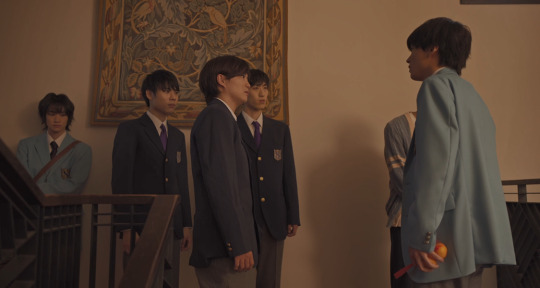
When Takabayashi realizes that his beloved Gii not only shrugs him off but is also interested in Takumi the freak, he gets consumed with jealousy and masterminds an attack on Takumi.
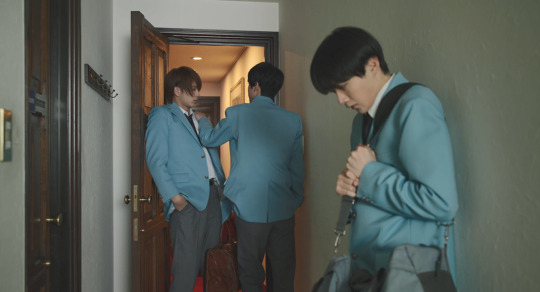
Spring comes, and Takumi and Gii are now second-year students. They’re assigned to the same room in the dorm, and their relationship gets much closer.

Then Takabayashi makes another move and drives Takumi into a corner. Gii realizes Takabayashi’s plot and tries to save Takumi, however...

And thus starts Takumi and Gii’s long, long sparkly story.
-
Fan-subbed by furritsubs
-
This post is planned as a part of a series:
1.Trailer plus (you are here)
2.School Culture & Male Androphilia in Japan
3.How does the movie compare with the source novel?
4.How does the movie compare with previous adaptations?
#takumi kun series#takumi-kun 6#japanese bl#タクミくんシリーズ 長い長い物語の始まりの朝。#タクミくんシリーズ#Gotoh Shinobu#Takumi-kun Series 6: The Morning of the Beginning of a Long#Takumi-kun Shirizu 6#タクミくんシリーズ6#Takumi-kun: The Dawn of the Long Tales#multi bl#asian lgbtq dramas#asian bl series#asianlgbtqdramas#jbl#takumi kun 6#japanese gay#japanese films
5 notes
·
View notes
Text

何気なく見た風景から、生きていようと思いをささやかに貰った。
19 notes
·
View notes
Text
風鈴の音 世界の皆様に捧ぐ!
Genden-TukuRich®️の世界へようこそ!VOL.240 蒸し暑い日が続いている。 皆様方はどうお過ごしだろうか? 毎日寝苦しい! 風呂に入っても気持ちが良いのは束の間だ!! エアコンがないとせっかく風呂に入って汗を流しても また汗をかいているのではないだろうか? 寝る頃には汗ばみ不快な思いで ベッドに横たわることになっているはずだ!! そこで役立つのが風鈴だ!! 風鈴の音はなぜか耳触りの良い音を奏でてくれる。 寝苦しい熱帯夜も涼しい気持ちにさせてくれる。 日本人で良かったと思う。 湿度の高い日本だからこそ生まれた文化であろう! 先祖に感謝の思いである!! では風鈴はいつ生まれたのだろう?! 中国で竹林に吊り下げて風の向きや音の鳴り方によって吉凶を占ったのが始まりのようだ。 中国2000年前のことである。 と言うことは中国にも風鈴があると言う…

View On WordPress
2 notes
·
View notes